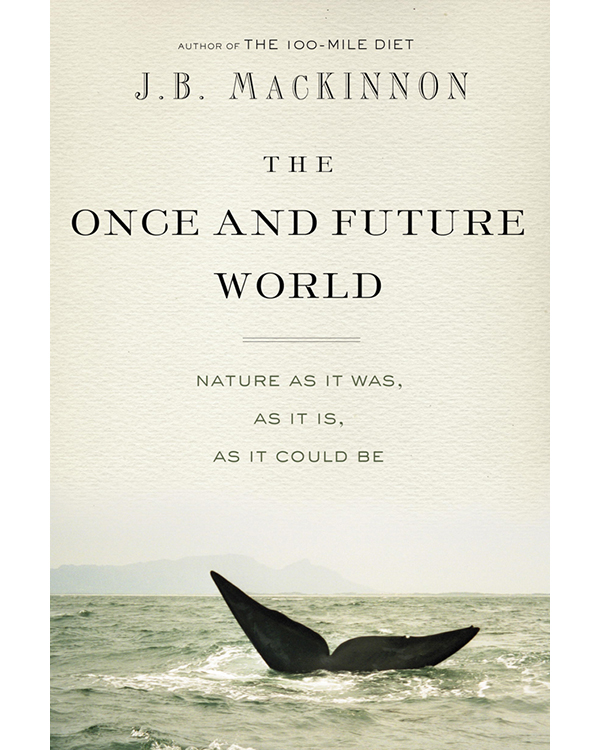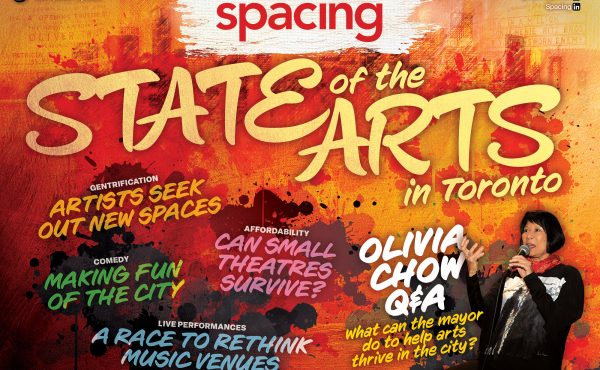
Author: J.B. Mackinnon (Random House, 2013)
I was instantaneously drawn to this book for no other reason than the title. I had not read the 100 Mile Diet (Mackinnon’s previous well received work) and really had no context for the content, itself. Instead, I was drawn in by a simple cover, beautiful typeface, and a title that seemed to strike a chord somewhere inside me.
I was right to have picked it up. From the start, The Once and Future World whisks readers away on a journey through the eyes of Mackinnon in his home town, and from there, we are ladled with facts and studies, that weave poetically through his fantastical play with the imagination. His strong language never falters and no matter what information he is describing, Mackinnon delivers his factual accounts alongside his anecdotes with the same beauty of prose.
Like the subtitle suggests, Mackinnon takes us into the past—as far back as prehistoric times—to allow us to see the world “as it was.” From here, the reader is moved into the present: comparing what has happened in the not-so-distant past, and what is happening now that is influencing the biology of the world around us. Charting what we are currently doing, or not doing, to fix this fragile ecosystem of ours.
The book concludes with the future, where Mackinnon creates a fictional island on which many of the creatures we lost throughout the pages of the book—akin to the loss they suffered during their time here on earth—are reintroduced. Readers are then asked to imagine themselves living along their side, and make a decision: with the heavy question as to what if we can make the ‘right choice” looming over our heads . “We are the creator and the created, the maker and the made,” as Mackinnon puts it.
One of the strongest aspects of The Once and Future World was how it highlighted that we simply do not, or choose not, to see the changes that have happened on our planet’s ecosystem over the course of human evolution.
There are several psychological profiles Mackinnon uses to further this theory, such as “change blindness,” or “shifting baseline syndrome.” The latter is a belief that, as we grow older and have children of our own, and they have children, their baselines (or expectations) of the world will change with them. For instance, the reference used in the book was that if a child is born in an area polluted heavily with smog, he/she will not notice the smog, thus creating a new baseline. Once the pollution increases, they will take notice. By that time, however, the smog has increased fourfold since their parents time, and so too will their children grow up in an age where a fourfold increase in smog is the baseline. Until an eightfold change occurs, they will also be blind to any problems.
In calling attention to how “shifting baseline syndrome” permeates through everything we do in society, Mackinnon describes how difficult establishing a true baseline is, at this stage of our evolution. We cannot simply jump back to a more primitive era, yet in order to find a truly ecologically friendly baseline, we may have to look back to our early hominid ancestors. This is a cascading problem, and why it is hard to quantify.
Mackinnon also briefly points to some geo-engineering that has taken place recently, specifically “ocean iron fertilization.” When whales were abundant in the ocean, they would eat krill who in turn eat plankton which are rich in iron. The whales then release their bowels close to the surface, an act that layers the water with iron-rich nutrients, which then feed the plankton. This describes a natural cycle—a natural geo-engineer of the earth—which helps to trap carbon and keep our oceans cooler.
When whaling increased, the amount of iron that was being re-released into the water decreased, and now humans are beginning to give it a go for themselves. Whether one is for or against geo-engineering does not really play a part in Mackinnon’s story. Instead, he merely points out that while it is ingenious (and scary) that human beings can craft elements of mother natures handiwork, had we left the whales alone and not invaded their habitats, these technological elements we feel so proud of would be completely unnecessary, as they are found within the workings of nature itself.
It was hard to not get emotionally charged, while reading The Once and Future World. To imagine all the things that one does in their daily life, thinking of the animals who have paid a simple drive to work, the wild flora destroyed to make way for our busy lives, it is hard not to have a moment where you feel incredibly small. And miraculously, Mackinnon never points the blame at anyone.
While he talks of where issues are stemming from, he never specifically calls out a group of people or profession. He is merely a story teller, indoctrinating his tales with facts that make you remember that this planet we live on is ever evolving, ever moving, and is not to be taken lightly.
The Once and Future World reads like the poetry about nature, but with enough scientific fact to not be lost in the realm of fiction. I leave you with a quote that struck me from the book…one you can take from what you will:
“We excuse, permit, adapt – and forget.“
***
J.B. Mackinnon’s work on Rewilding Vancouver is currently on display at the Museum of Vancouver from February 27th to September 1st. The exhibit is meant to highlight the ideas put forward by Mackinnon regarding the rewilding of Vancouver through the reintroducing of animal life into our human-centric ecosystem.
**
Jeremy Senko is happily lost in the world of theoretical architecture and design. He is forever a student at heart, consistently reading, experiencing and learning about the world he inhabits. More specifically, he recently completed his Bachelor of Interior Design at Kwantlen Polytechnic University, where he pushed the limits (and the patience) of his professors.


